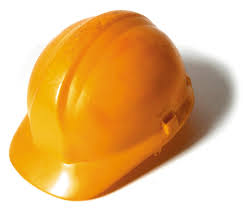Some of my most challenging days in my surgery center career have been due to temperature and humidity problems in the OR. There have been times where I felt like I should have obtained an HVAC certification in dealing with hot rooms, broken systems, and all the drama that goes with it. If you have lived it, I’m sure you can relate to the unwanted excitement a hot or humid OR can bring, and know how important it is to have a good HVAC service technician on speed dial.
To add to the fun challenge, CMS has revised it’s standards on how we look at humidity and storage.
CMS guidelines has always provided direction in how rooms are maintained, and require that we follow nationally recognized standards in setting our facility policy:
From CMS guidance for surveyors: “Acceptable standards for OR temperature, such as those recommended by the Association of Operating Room Nurses (AORN) or the FGI, should be incorporated into the ASC’s policy.”
The new guidelines updated this April now bring manufacturer’s guidelines into play:
“ASCs must also ensure, however, that the OR humidity level is appropriate for all of their surgical and anesthesia equipment, and that supplies which require a different level of humidity than that in the OR are appropriately stored until used.”
When I read that, I recall thinking how I would communicate the new guideline to those who needed to know, and thought I would begin by stating “Don’t shoot the messenger”. I recognized that a facility project would be needed to ensure compliance.
As self assigned ad hoc project manager, I began with…how do we determine:
a) what humidity is required for the items stored in the OR, and
b) How do we document compliance?
Here’s my recommended six step plan. (Place virtual hard hat on…)
1. If you have a list of your equipment and supplies in the OR, great. If not, you’ll need to create one.
2. Once you have the list, create a spreadsheet. Item name, manufacturer name, how information will be obtained (web address, telephone, written guidelines), and humidity range requirement.
3. Parse the list out to the staff. Have staff locate the guidelines, then review for any humidity recommendations. Have a checkbox for completed review as well as the documented range, or that there is no recommended range.
4. Once complete, educate your materials manager to check humidity requirements on all new OR equipment and supplies, communicate, and document, keeping the list up to date.
5. Make the process a Quality Study. The goal is verification that all equipment and supplies are being stored appropriately based on CMS guidelines.
6. If the study results in any equipment or supply being stored differently, determine how and where.
While you are doing the study, take a quick look at your policy and logs. Verify your policy states what guidelines you follow and the ranges, that your logs are being maintained daily, and that any out of range readings were documented and addressed.
Once you are done, remove virtual hard hat, store for later, and celebrate the accomplishment. You may want to find a way to chill out during some down time as well.
If you need assistance, let me help. e-mail me your contact information to: leslie@almss.com. I can help with your study, your project, or other facility needs. Thanks!


